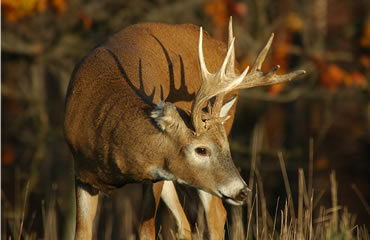One thing every deer hunter should know is the approximate time of the whitetail breeding season in the area they hunt.
The rut is critical because this is the time of the season when a mature buck is most likely to move during daylight hours. The buck's instinct to breed is so strong that he'll throw caution to the wind as he travels to find estrus does.
Learn to recognize rutting behavior. If you see a buck with his nose to the ground like a bird dog, you can bet he's following a doe. He usually doesn't get to breed the doe as soon as he finds her, either. Unless the timing is perfect, the doe leads the buck on a chase that's designed to attract the attention of other dominant bucks.
If you see a buck with a doe during the rut, chances are good he won't leave that doe. If the doe comes across an opening, get ready. The buck will be close behind. It's also helpful to know that breeding chases often follow an unpredictable route and might circle back repeatedly. If a chase comes by your stand and you don't get a shot, stay ready in case the deer come back.
It's also possible to see a breeding chase in the distance and hustle to get in range. The deer are so involved in the breeding ritual that they're less wary than usual.
When hunting during the rut, get ready if you see a doe running low to the ground in a permissive way. A buck is on her tail. Another tip is to listen for buck grunts Bucks often grunt when they're on the trail of a hot doe. Be ready, because the buck will be on the move.
Read Recent Tip of the Week:
• Patience, Patience, Patience! Taking bucks consistently is an art; anyone can luck into a big buck, but it takes work to harvest bucks year after year.



.png)